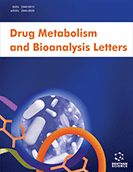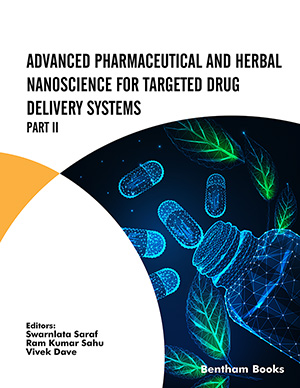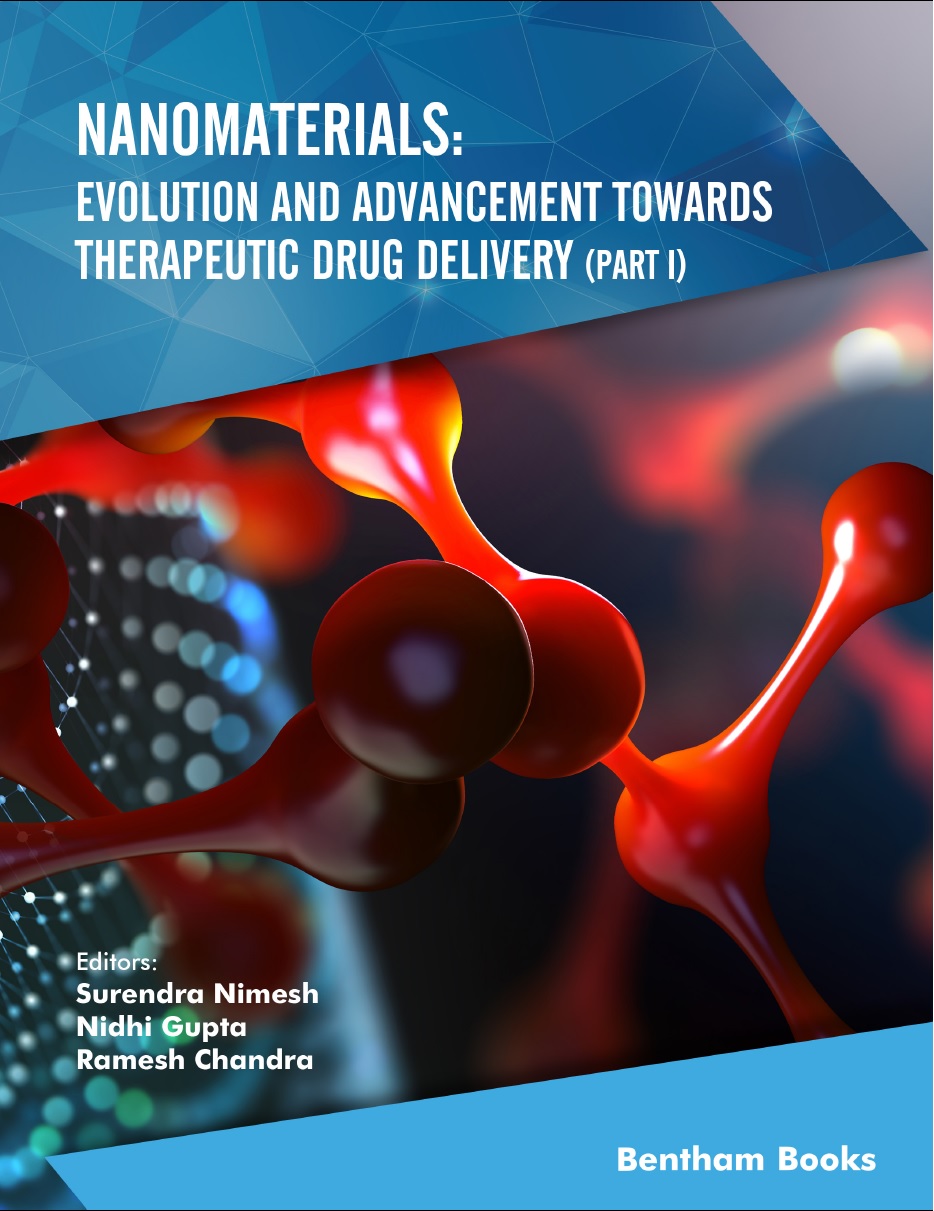Abstract
Cancer is characterized by disrupted molecular variables caused by cells that deviate from regular signal transduction. The uncontrolled segment of such cancerous cells annihilates most of the tissues that contact them. Gene therapy, immunotherapy, and nanotechnology advancements have resulted in novel strategies for anticancer drug delivery. Furthermore, diverse dispersion of nanoparticles in normal stroma cells adversely affects the healthy cells and disrupts the crosstalk of tumour stroma. It can contribute to cancer cell progression inhibition and, conversely, to acquired resistance, enabling cancer cell metastasis and proliferation. The tumour's microenvironment is critical in controlling the dispersion and physiological activities of nano-chemotherapeutics which is one of the targeted drug therapy. As it is one of the methods of treating cancer that involves the use of medications or other substances to specifically target and kill off certain subsets of malignant cells. A targeted therapy may be administered alone or in addition to more conventional methods of care like surgery, chemotherapy, or radiation treatment. The tumour microenvironment, stromatogenesis, barriers and advancement in the drug delivery system across tumour tissue are summarised in this review.
Keywords: Tumor microenvironment, nanoparticles, immunotherapy, drug delivery, gene therapy, proliferation.
[PMID: 11895922]
[http://dx.doi.org/10.1016/j.pharmthera.2019.04.011] [PMID: 31047907]
[http://dx.doi.org/10.1186/1475-2867-14-41] [PMID: 24883045]
[http://dx.doi.org/10.1038/nrc1477] [PMID: 15516957]
[http://dx.doi.org/10.1016/j.jconrel.2014.12.018] [PMID: 25526702]
[http://dx.doi.org/10.1242/jcs.116392] [PMID: 23420197]
[http://dx.doi.org/10.1038/nature04871] [PMID: 16724055]
[http://dx.doi.org/10.1126/science.1171362] [PMID: 19460966]
[http://dx.doi.org/10.1038/cddis.2016.224] [PMID: 27468688]
[http://dx.doi.org/10.1158/0008-5472.CAN-13-0530] [PMID: 23903958]
[http://dx.doi.org/10.1593/neo.121092] [PMID: 23097628]
[http://dx.doi.org/10.1016/j.neo.2015.04.004] [PMID: 26025666]
[http://dx.doi.org/10.1016/j.ccr.2011.01.020] [PMID: 21316604]
[http://dx.doi.org/10.1002/jcb.21186] [PMID: 17211838]
[http://dx.doi.org/10.1038/cdd.2015.78] [PMID: 26068592]
[http://dx.doi.org/10.1158/0008-5472.CAN-07-3127] [PMID: 17974953]
[http://dx.doi.org/10.1002/hep.510260315] [PMID: 9303493]
[http://dx.doi.org/10.1186/bcr138] [PMID: 10519415]
[http://dx.doi.org/10.1126/science.1090922] [PMID: 14764882]
[http://dx.doi.org/10.1158/0008-5472.CAN-04-4510] [PMID: 15867373]
[http://dx.doi.org/10.1016/j.cell.2005.02.034] [PMID: 15882617]
[http://dx.doi.org/10.1593/neo.121950] [PMID: 23479504]
[http://dx.doi.org/10.1038/cdd.2015.82] [PMID: 26113040]
[http://dx.doi.org/10.1038/cddis.2015.36] [PMID: 25789971]
[http://dx.doi.org/10.1038/cddis.2016.412] [PMID: 27929537]
[http://dx.doi.org/10.1016/j.yexcr.2010.02.045] [PMID: 20211171]
[http://dx.doi.org/10.1046/j.1523-1755.2000.00419.x] [PMID: 11115069]
[http://dx.doi.org/10.1006/cbir.1997.0130] [PMID: 9151994]
[http://dx.doi.org/10.1074/jbc.M116.730945] [PMID: 27531748]
[http://dx.doi.org/10.1158/1541-7786.MCR-16-0338] [PMID: 28213554]
[http://dx.doi.org/10.1186/s12943-016-0510-x] [PMID: 27001172]
[http://dx.doi.org/10.1073/pnas.0402088101] [PMID: 15141079]
[http://dx.doi.org/10.1074/jbc.M112.352872] [PMID: 22930750]
[http://dx.doi.org/10.1242/dev.083881] [PMID: 23095889]
[http://dx.doi.org/10.1158/2159-8290.CD-13-0118] [PMID: 23906982]
[http://dx.doi.org/10.1074/jbc.M511408200] [PMID: 16565084]
[http://dx.doi.org/10.1158/1541-7786.MCR-12-0629] [PMID: 23378577]
[http://dx.doi.org/10.1158/0008-5472.CAN-12-3963] [PMID: 23539444]
[http://dx.doi.org/10.1046/j.1432-1033.2003.03846.x] [PMID: 14622280]
[http://dx.doi.org/10.1186/1471-2407-14-1] [PMID: 24383403]
[http://dx.doi.org/10.1242/jcs.023820] [PMID: 21123617]
[http://dx.doi.org/10.1126/science.1176009]
[http://dx.doi.org/10.1101/cshperspect.a005058] [PMID: 21917992]
[http://dx.doi.org/10.1016/j.addr.2015.11.001] [PMID: 26562801]
[http://dx.doi.org/10.3390/ijms19103028] [PMID: 30287763]
[http://dx.doi.org/10.1083/jcb.201102147] [PMID: 22351925]
[http://dx.doi.org/10.1530/JOE-10-0377] [PMID: 21307119]
[http://dx.doi.org/10.1007/s10585-019-09966-1] [PMID: 30972526]
[http://dx.doi.org/10.3389/fonc.2018.00431] [PMID: 30356678]
[http://dx.doi.org/10.3109/14756366.2016.1161620]
[http://dx.doi.org/10.1186/s12885-018-4820-9] [PMID: 30227844]
[http://dx.doi.org/10.1186/s12967-019-2058-1] [PMID: 31521169]
[http://dx.doi.org/10.1111/cas.12329] [PMID: 24283360]
[http://dx.doi.org/10.1593/neo.13786] [PMID: 23908589]
[http://dx.doi.org/10.1158/0008-5472.CAN-18-2616] [PMID: 30862717]
[http://dx.doi.org/10.1007/s12195-018-0544-9] [PMID: 31719892]
[http://dx.doi.org/10.1186/1741-7015-4-38] [PMID: 17190588]
[http://dx.doi.org/10.1016/j.bmcl.2018.07.001] [PMID: 30098867]
[http://dx.doi.org/10.3390/ijms20071634] [PMID: 30986934]
[http://dx.doi.org/10.1016/j.jconrel.2018.01.029] [PMID: 29382546]
[http://dx.doi.org/10.1016/j.canlet.2006.02.017] [PMID: 16632194]
[http://dx.doi.org/10.1080/19336918.2015.1008331] [PMID: 25738825]
[http://dx.doi.org/10.1016/j.jconrel.2017.08.040] [PMID: 28867376]
[http://dx.doi.org/10.1016/j.jconrel.2016.09.014] [PMID: 27641831]
[http://dx.doi.org/10.1126/scitranslmed.aau3259] [PMID: 30971453]
[http://dx.doi.org/10.1016/j.colsurfb.2016.08.005] [PMID: 27513587]
[http://dx.doi.org/10.1016/j.jconrel.2012.08.029] [PMID: 22964395]
[http://dx.doi.org/10.1038/ncomms15584] [PMID: 28548090]
[http://dx.doi.org/10.18632/oncotarget.9490]
[http://dx.doi.org/10.1016/j.nano.2014.06.011] [PMID: 24972007]
[http://dx.doi.org/10.1073/pnas.92.12.5510] [PMID: 7539918]
[http://dx.doi.org/10.1126/science.1059796] [PMID: 11292861]
[http://dx.doi.org/10.1038/35017054] [PMID: 10878807]
[http://dx.doi.org/10.1074/jbc.M312254200] [PMID: 14701857]
[http://dx.doi.org/10.1101/gad.924501] [PMID: 11641274]
[http://dx.doi.org/10.1038/cddis.2016.187] [PMID: 27362802]
[http://dx.doi.org/10.1101/gad.12.2.149] [PMID: 9436976]
[http://dx.doi.org/10.1073/pnas.140087397] [PMID: 10880563]
[http://dx.doi.org/10.1038/nrc1093] [PMID: 12778130]
[http://dx.doi.org/10.1038/nature10144] [PMID: 21593862]
[http://dx.doi.org/10.1038/nature04483] [PMID: 16355214]
[http://dx.doi.org/10.1038/cdd.2016.20] [PMID: 26943318]
[http://dx.doi.org/10.1038/339058a0] [PMID: 2469964]
[http://dx.doi.org/10.1161/ATVBAHA.110.214106] [PMID: 20966400]
[http://dx.doi.org/10.1182/blood-2008-12-193581] [PMID: 19439736]
[http://dx.doi.org/10.1172/JCI57322] [PMID: 22426208]
[http://dx.doi.org/10.1016/j.ccr.2004.09.026] [PMID: 15542432]
[http://dx.doi.org/10.1016/j.ccr.2008.01.034] [PMID: 18328425]
[http://dx.doi.org/10.1038/cdd.2014.214] [PMID: 25571973]
[http://dx.doi.org/10.1007/s10456-016-9527-4] [PMID: 27699500]
[http://dx.doi.org/10.4172/2157-2518.S13-005] [PMID: 24600535]
[http://dx.doi.org/10.1038/cddis.2015.174] [PMID: 26111058]
[http://dx.doi.org/10.1016/j.ijrobp.2003.09.049] [PMID: 14751509]
[http://dx.doi.org/10.1126/scitranslmed.3001542] [PMID: 21248315]
[http://dx.doi.org/10.1016/j.ccr.2011.11.017] [PMID: 22264788]
[http://dx.doi.org/10.1038/nn.4288] [PMID: 27227366]
[http://dx.doi.org/10.1038/kisup.2014.20]
[http://dx.doi.org/10.1007/s10549-008-9936-1] [PMID: 18293084]
[http://dx.doi.org/10.1002/cncr.11246] [PMID: 12627523]
[http://dx.doi.org/10.1007/s10549-006-9190-3] [PMID: 16555123]
[http://dx.doi.org/10.1038/sj.bjc.6601186] [PMID: 12966423]
[http://dx.doi.org/10.1016/j.canlet.2013.12.001] [PMID: 24333723]
[http://dx.doi.org/10.1096/fj.11-195321] [PMID: 22067482]
[PMID: 18630523]
[http://dx.doi.org/10.1038/onc.2011.187] [PMID: 21666710]
[http://dx.doi.org/10.1016/j.celrep.2013.12.011] [PMID: 24388748]
[http://dx.doi.org/10.1084/jem.20041896] [PMID: 15809353]
[http://dx.doi.org/10.1111/boc.201400079] [PMID: 25757011]
[http://dx.doi.org/10.1038/s41419-019-1435-2] [PMID: 30894509]
[http://dx.doi.org/10.1016/j.immuni.2014.06.010] [PMID: 25035953]
[http://dx.doi.org/10.1080/2162402X.2019.1596004] [PMID: 31143517]
[http://dx.doi.org/10.3389/fimmu.2019.01799] [PMID: 31417566]
[http://dx.doi.org/10.1016/j.it.2004.09.015] [PMID: 15530839]
[http://dx.doi.org/10.3389/fcell.2018.00038]
[http://dx.doi.org/10.4049/jimmunol.1000413] [PMID: 20530259]
[http://dx.doi.org/10.1186/s12943-019-0976-4] [PMID: 30927925]
[http://dx.doi.org/10.1038/s41423-019-0209-1] [PMID: 30842627]
[http://dx.doi.org/10.1186/s13045-019-0760-3] [PMID: 31300030]
[http://dx.doi.org/10.1371/journal.pone.0006562] [PMID: 19668347]
[http://dx.doi.org/10.4103/aam.aam_8_17] [PMID: 29063902]
[http://dx.doi.org/10.1186/s12929-019-0568-z] [PMID: 31629410]
[http://dx.doi.org/10.2147/OTT.S168317] [PMID: 30013362]
[http://dx.doi.org/10.2217/imt-2018-0156] [PMID: 31088236]
[http://dx.doi.org/10.1016/j.biomaterials.2014.09.007] [PMID: 25245263]
[http://dx.doi.org/10.1038/nrclinonc.2016.217] [PMID: 28117416]
[http://dx.doi.org/10.1159/000496277] [PMID: 30815391]
[http://dx.doi.org/10.1158/2159-8274.CD-10-0028] [PMID: 22039576]
[http://dx.doi.org/10.1038/nm.3337] [PMID: 24056773]
[http://dx.doi.org/10.1016/j.ccr.2014.05.016] [PMID: 24898549]
[http://dx.doi.org/10.1126/scitranslmed.aal3604] [PMID: 28490665]
[http://dx.doi.org/10.3390/antib8020030] [PMID: 31544836]
[http://dx.doi.org/10.1158/0008-5472.CAN-16-0442] [PMID: 27872091]
[http://dx.doi.org/10.1038/srep28717] [PMID: 27346486]
[http://dx.doi.org/10.1016/j.jconrel.2019.10.003] [PMID: 31669209]
[http://dx.doi.org/10.3389/fimmu.2018.01486] [PMID: 30002658]
[http://dx.doi.org/10.1038/cdd.2012.25] [PMID: 22421963]
[http://dx.doi.org/10.1084/jem.194.6.781] [PMID: 11560994]
[http://dx.doi.org/10.1042/BSR20180992] [PMID: 30530866]
[http://dx.doi.org/10.3389/fimmu.2018.00127] [PMID: 29441073]
[http://dx.doi.org/10.1073/pnas.101129998]
[http://dx.doi.org/10.1196/annals.1368.022] [PMID: 17108207]
[http://dx.doi.org/10.1152/physrev.1996.76.1.69] [PMID: 8592733]
[http://dx.doi.org/10.1177/106689690401200101] [PMID: 14765266]
[http://dx.doi.org/10.1073/pnas.87.1.75] [PMID: 2296606]
[http://dx.doi.org/10.1038/sj.onc.1206918] [PMID: 14627989]
[http://dx.doi.org/10.1038/sj.onc.1208013] [PMID: 15326482]
[http://dx.doi.org/10.4161/cbt.6.5.4198] [PMID: 17534144]
[http://dx.doi.org/10.1186/1471-2407-13-125] [PMID: 23506169]
[http://dx.doi.org/10.1016/S0002-9440(10)64554-3] [PMID: 10934146]
[http://dx.doi.org/10.1046/j.1365-2796.2001.00867.x] [PMID: 11489059]
[http://dx.doi.org/10.1186/gb-2006-7-12-243]
[http://dx.doi.org/10.2174/138161206777947461] [PMID: 16918437]
[http://dx.doi.org/10.1016/j.coi.2006.09.005] [PMID: 17010588]
[http://dx.doi.org/10.1016/j.semcancer.2019.07.028] [PMID: 31377307]
[http://dx.doi.org/10.1101/gad.296905.117] [PMID: 28270513]
[http://dx.doi.org/10.4049/jimmunol.166.1.678] [PMID: 11123353]
[http://dx.doi.org/10.1016/j.ccr.2004.08.031] [PMID: 15488763]
[http://dx.doi.org/10.1016/j.canlet.2008.03.012] [PMID: 18433992]
[http://dx.doi.org/10.1038/nri2506] [PMID: 19197294]
[http://dx.doi.org/10.1038/nrc2444] [PMID: 18633355]
[http://dx.doi.org/10.1038/nm.2999] [PMID: 23202296]
[http://dx.doi.org/10.1016/j.ccr.2007.12.004] [PMID: 18167337]
[http://dx.doi.org/10.1007/s11095-007-9443-9] [PMID: 17891483]
[http://dx.doi.org/10.1097/CJI.0000000000000011]
[http://dx.doi.org/10.1007/s12026-014-8503-6] [PMID: 24791942]
[http://dx.doi.org/10.1126/science.aac9935] [PMID: 26966191]
[http://dx.doi.org/10.1016/j.cell.2011.02.013] [PMID: 21376230]
[http://dx.doi.org/10.1038/nrm2455]
[http://dx.doi.org/10.1158/0008-5472.CAN-06-0040] [PMID: 16849569]
[http://dx.doi.org/10.1016/j.ceb.2016.07.010] [PMID: 27521599]
[http://dx.doi.org/10.1038/s41467-019-12270-x] [PMID: 31641119]
[http://dx.doi.org/10.1097/CJI.0b013e3182518e83] [PMID: 22495387]
[http://dx.doi.org/10.3324/haematol.2012.082248] [PMID: 23812940]
[http://dx.doi.org/10.20517/2394-4722.2016.08]
[http://dx.doi.org/10.1210/er.2006-0027] [PMID: 17409287]
[http://dx.doi.org/10.1111/1523-1747.ep12598043] [PMID: 239072]
[http://dx.doi.org/10.1038/sj.onc.1210172] [PMID: 17260025]
[http://dx.doi.org/10.1096/fj.00-0738fje] [PMID: 11427501]
[http://dx.doi.org/10.1016/j.bbi.2008.06.007] [PMID: 18638541]
[http://dx.doi.org/10.1186/s13046-019-1266-0] [PMID: 31217020]
[http://dx.doi.org/10.1186/s12916-016-0623-5] [PMID: 27151159]
[http://dx.doi.org/10.1186/s12859-016-1141-3] [PMID: 27377892]
[http://dx.doi.org/10.1186/2051-1426-3-S2-P237]
[http://dx.doi.org/10.3322/caac.21235] [PMID: 24890451]
[http://dx.doi.org/10.1016/j.cbi.2021.109745] [PMID: 34774839]
[http://dx.doi.org/10.1002/bjs.1800670602] [PMID: 6155968]
[http://dx.doi.org/10.1016/S0140-6736(01)05965-7] [PMID: 11564482]
[http://dx.doi.org/10.1038/nrc3153] [PMID: 22020206]
[http://dx.doi.org/10.1186/s12916-015-0278-7] [PMID: 25857315]
[http://dx.doi.org/10.1038/s41401-020-0424-4] [PMID: 32424240]
[http://dx.doi.org/10.1038/s41551-017-0029]
[http://dx.doi.org/10.1016/j.critrevonc.2020.103015] [PMID: 32563131]
[http://dx.doi.org/10.1155/2010/723798] [PMID: 20454584]
[http://dx.doi.org/10.1038/sj.onc.1206933] [PMID: 14576837]
[http://dx.doi.org/10.1021/ja803688x] [PMID: 18661992]
[http://dx.doi.org/10.1016/j.jconrel.2011.12.030] [PMID: 22233969]
[http://dx.doi.org/10.1200/JCO.2011.36.5742] [PMID: 21969517]
[http://dx.doi.org/10.1186/1757-2215-4-21] [PMID: 22141344]
[http://dx.doi.org/10.1016/j.ijpharm.2019.118498] [PMID: 31301465]
[http://dx.doi.org/10.1002/med.21280] [PMID: 23494977]
[http://dx.doi.org/10.12980/APJTB.4.2014C980] [PMID: 25183064]
[http://dx.doi.org/10.1158/0008-5472.CAN-08-2356] [PMID: 19117994]
[http://dx.doi.org/10.1039/C8PY01160E]
[http://dx.doi.org/10.1021/acsnano.0c01034] [PMID: 32356972]
[PMID: 2946403]
[http://dx.doi.org/10.1007/978-3-642-00477-3_2] [PMID: 20217526]
[http://dx.doi.org/10.1007/978-1-4614-2305-8_2]
[http://dx.doi.org/10.1016/j.colsurfb.2014.12.041] [PMID: 25591851]
[http://dx.doi.org/10.2174/1381612827666210728104318] [PMID: 34323182]
[http://dx.doi.org/10.1039/C4NR04334K] [PMID: 25273283]
[http://dx.doi.org/10.1007/978-1-4939-1625-2_11] [PMID: 25253255]
[http://dx.doi.org/10.3389/fchem.2014.00069] [PMID: 25202689]
[http://dx.doi.org/10.1038/nnano.2007.387] [PMID: 18654426]
[http://dx.doi.org/10.1146/annurev-med-040210-162544] [PMID: 21888516]
[http://dx.doi.org/10.2147/IJN.S53593] [PMID: 24741304]
[http://dx.doi.org/10.1021/cm402592t]
[http://dx.doi.org/10.1007/s10059-013-0103-0] [PMID: 23579479]
[http://dx.doi.org/10.1002/adma.201104763] [PMID: 22378538]
[http://dx.doi.org/10.1007/s11051-014-2648-z]
[http://dx.doi.org/10.1208/s12249-014-0142-7] [PMID: 24871552]
[http://dx.doi.org/10.1007/s12645-013-0043-6] [PMID: 26069508]
[http://dx.doi.org/10.1259/bjr/59448833] [PMID: 22010024]
[http://dx.doi.org/10.1016/j.critrevonc.2013.10.002] [PMID: 24182420]
[http://dx.doi.org/10.1007/s13204-013-0216-y]
[http://dx.doi.org/10.1002/adfm.201504185] [PMID: 27790080]
[http://dx.doi.org/10.1038/nbt.3330] [PMID: 26348965]
[http://dx.doi.org/10.1016/j.addr.2012.10.002] [PMID: 23088862]
[http://dx.doi.org/10.1126/science.1071420] [PMID: 11976409]
[http://dx.doi.org/10.1002/adma.201401554] [PMID: 25328159]
[http://dx.doi.org/10.1016/j.carbpol.2020.116204] [PMID: 32299556]
[http://dx.doi.org/10.1007/s00280-008-0746-2] [PMID: 18398613]
[http://dx.doi.org/10.1016/j.biomaterials.2010.01.065] [PMID: 20138662]
[http://dx.doi.org/10.1016/S0142-9612(02)00445-3] [PMID: 12527253]
[http://dx.doi.org/10.1038/nrd1775] [PMID: 16052241]
[http://dx.doi.org/10.1021/acsnano.7b07583] [PMID: 29505236]
[http://dx.doi.org/10.1021/acs.molpharmaceut.6b01068] [PMID: 28212490]
[http://dx.doi.org/10.1016/j.actbio.2019.09.009] [PMID: 31518706]
[PMID: 2459969]
[http://dx.doi.org/10.1038/natrevmats.2016.14]
[http://dx.doi.org/10.1021/acs.molpharmaceut.7b00475] [PMID: 28845990]
[http://dx.doi.org/10.1016/j.jconrel.2015.05.286] [PMID: 26031842]
[http://dx.doi.org/10.2147/IJN.S24167] [PMID: 22114495]
[http://dx.doi.org/10.1126/scitranslmed.3008455]
[http://dx.doi.org/10.1186/s12967-016-0872-2] [PMID: 27149858]
[http://dx.doi.org/10.2147/IJN.S128802] [PMID: 28496326]
[http://dx.doi.org/10.1038/nnano.2012.45] [PMID: 22484912]
[http://dx.doi.org/10.1038/srep30619] [PMID: 27470938]
[http://dx.doi.org/10.1021/acs.molpharmaceut.8b00319] [PMID: 29767984]
[http://dx.doi.org/10.1016/j.ijpharm.2011.12.015] [PMID: 22197775]
[http://dx.doi.org/10.1007/s00280-010-1305-1] [PMID: 20306263]
[http://dx.doi.org/10.1038/ncomms3516] [PMID: 24084631]
[http://dx.doi.org/10.1021/acsami.5b07116] [PMID: 26461206]
[http://dx.doi.org/10.1016/j.biomaterials.2015.02.077] [PMID: 25890716]
[http://dx.doi.org/10.4172/2157-2518.1000178]
[http://dx.doi.org/10.1038/sj.bjc.6602626] [PMID: 15942637]
[http://dx.doi.org/10.1016/j.jconrel.2006.05.027] [PMID: 16876899]
[http://dx.doi.org/10.1002/jmri.10181] [PMID: 12353258]
[http://dx.doi.org/10.2967/jnumed.109.068981] [PMID: 20660380]
[http://dx.doi.org/10.1158/0008-5472.CAN-07-1805] [PMID: 18006801]
[http://dx.doi.org/10.1002/ijc.25009] [PMID: 19876915]
[http://dx.doi.org/10.1039/c3cs60048c] [PMID: 23549663]
[http://dx.doi.org/10.1016/j.biotechadv.2013.08.002] [PMID: 23933109]
[http://dx.doi.org/10.1039/C3TB21383H] [PMID: 32261518]
[http://dx.doi.org/10.1021/acsnano.6b02326] [PMID: 27244096]
[http://dx.doi.org/10.1021/acsnano.5b07706] [PMID: 26866752]
[http://dx.doi.org/10.1021/acs.nanolett.8b04296] [PMID: 30943039]
[http://dx.doi.org/10.1016/j.jconrel.2017.02.006] [PMID: 28167286]
[http://dx.doi.org/10.1039/C8TB00319J] [PMID: 32254351]
[http://dx.doi.org/10.1172/JCI92284] [PMID: 28414297]
[http://dx.doi.org/10.1021/acsnano.6b08731] [PMID: 28165223]
[http://dx.doi.org/10.2217/nnm.11.141] [PMID: 22077464]
[http://dx.doi.org/10.7150/thno.29137] [PMID: 30809279]
[http://dx.doi.org/10.1124/jpet.107.121632] [PMID: 17420296]
[http://dx.doi.org/10.1007/s10555-007-9059-x] [PMID: 17415529]
[http://dx.doi.org/10.1016/j.tips.2012.01.005] [PMID: 22398146]
[http://dx.doi.org/10.1038/nrc3064] [PMID: 21606941]
[http://dx.doi.org/10.1016/S1470-2045(00)00006-1] [PMID: 11905684]
[http://dx.doi.org/10.1080/14756366.2016.1252760] [PMID: 28095711]
[http://dx.doi.org/10.1371/journal.pone.0159763] [PMID: 27447181]
[http://dx.doi.org/10.1007/s10585-011-9415-7] [PMID: 21861189]
[http://dx.doi.org/10.1016/j.juro.2012.03.113] [PMID: 22704445]
[http://dx.doi.org/10.1158/0008-5472.CAN-16-2844] [PMID: 28249898]
[http://dx.doi.org/10.1016/S0006-2952(03)00467-2]
[http://dx.doi.org/10.1016/S0006-2952(03)00468-4] [PMID: 14505801]
[http://dx.doi.org/10.1158/0008-5472.CAN-07-5575] [PMID: 19276390]
[http://dx.doi.org/10.1158/0008-5472.CAN-08-2394] [PMID: 19276380]
[http://dx.doi.org/10.1016/j.freeradbiomed.2016.07.006] [PMID: 27417937]
[http://dx.doi.org/10.1016/j.freeradbiomed.2016.03.006] [PMID: 27012421]
[http://dx.doi.org/10.1016/j.mehy.2006.08.046] [PMID: 17383109]
[http://dx.doi.org/10.1016/j.ebiom.2015.05.017300]
[http://dx.doi.org/10.1021/mp070040a]
[http://dx.doi.org/10.3390/cancers4020442] [PMID: 24213319]






















